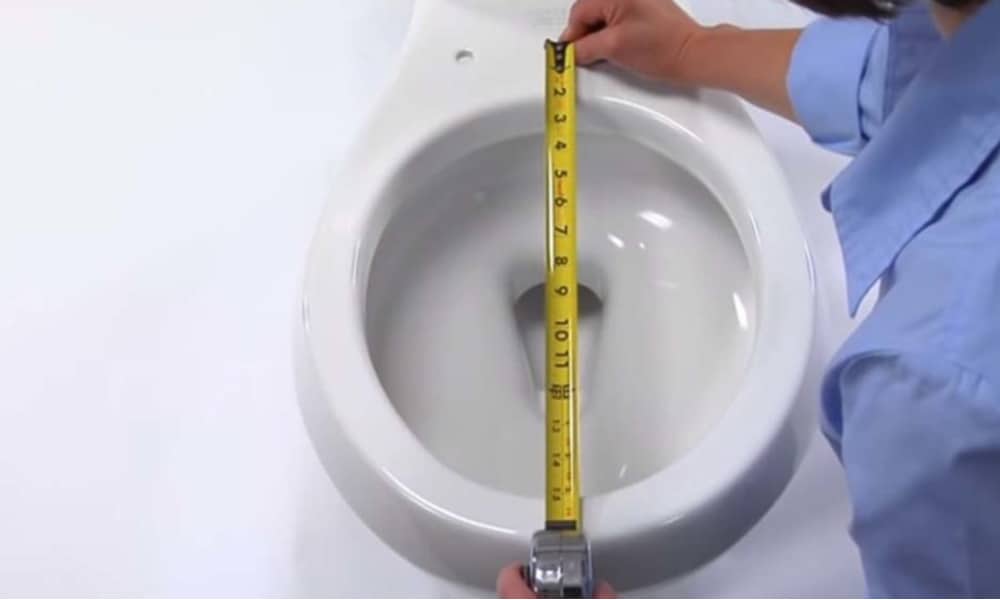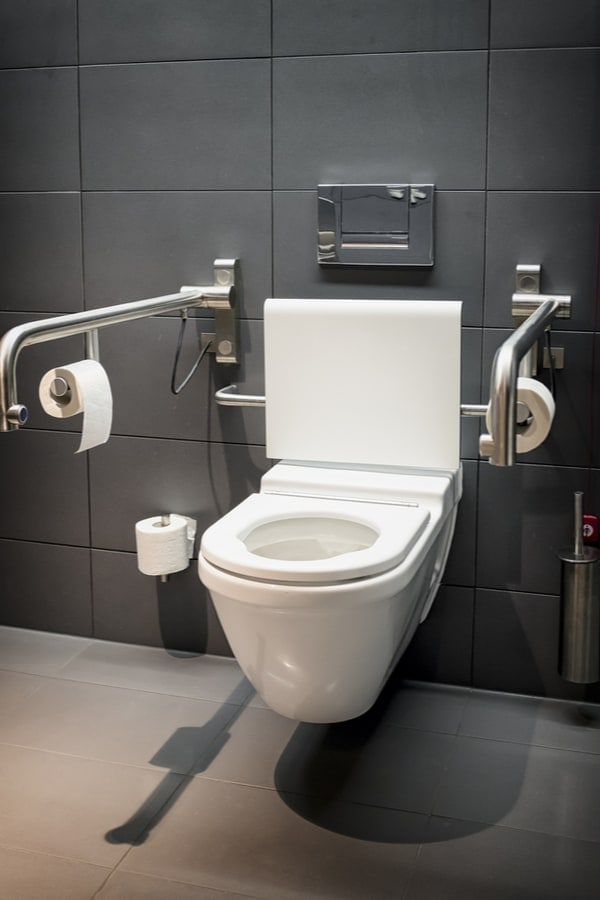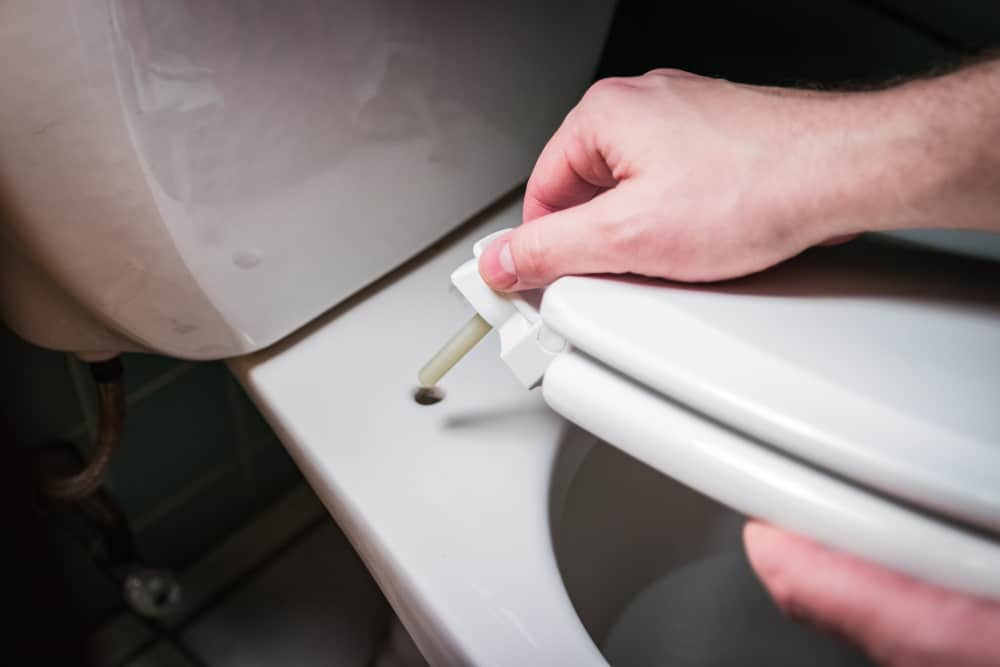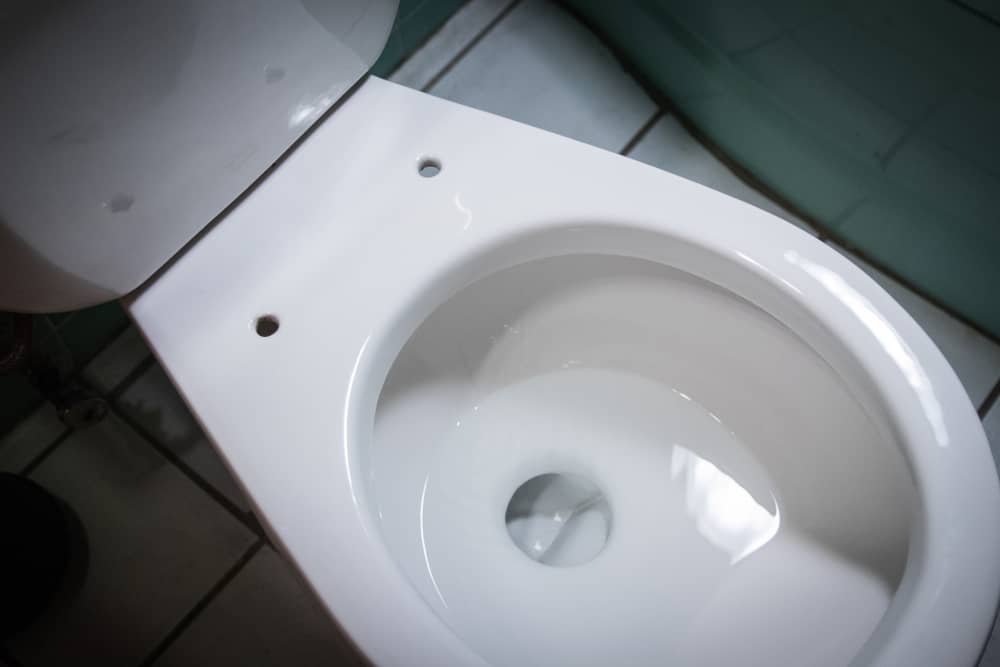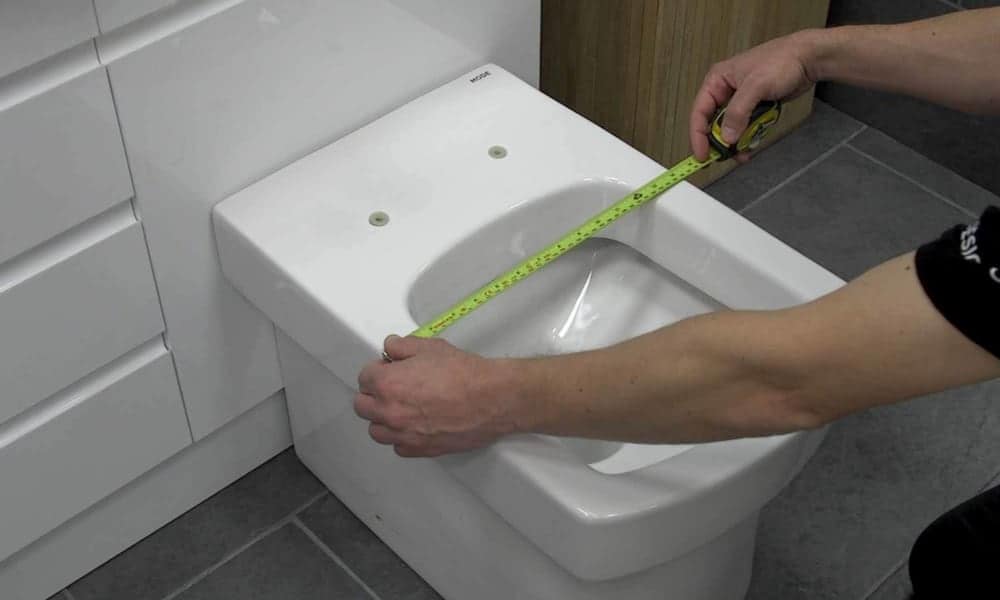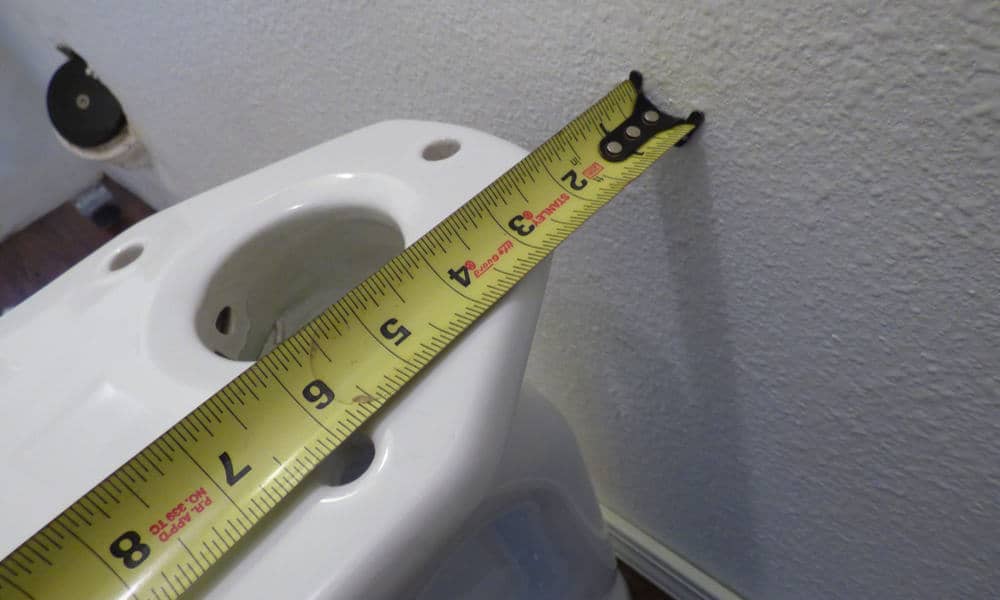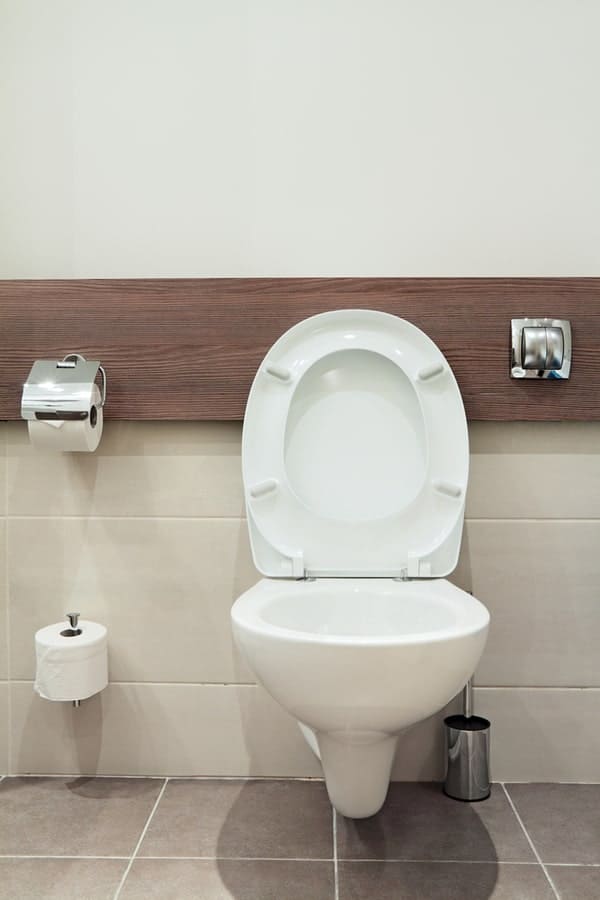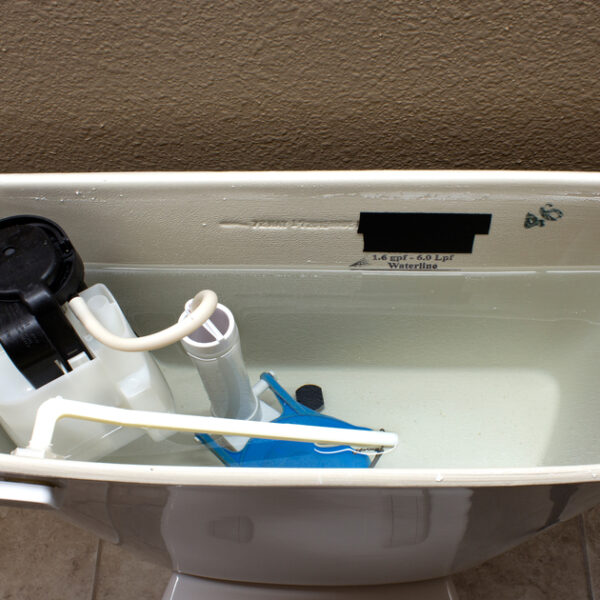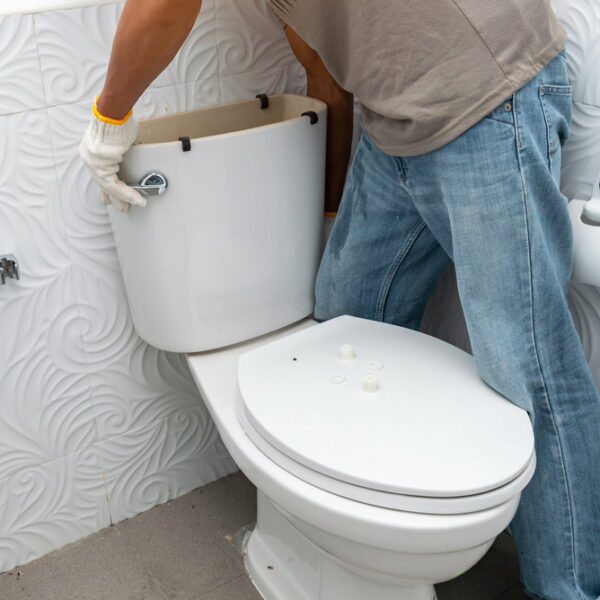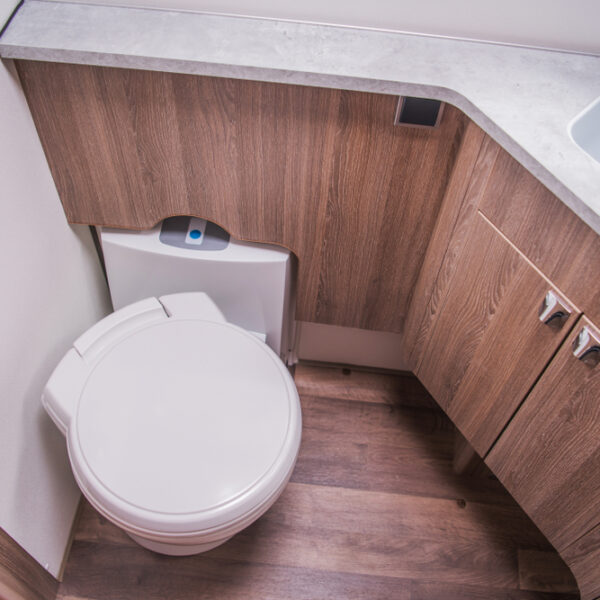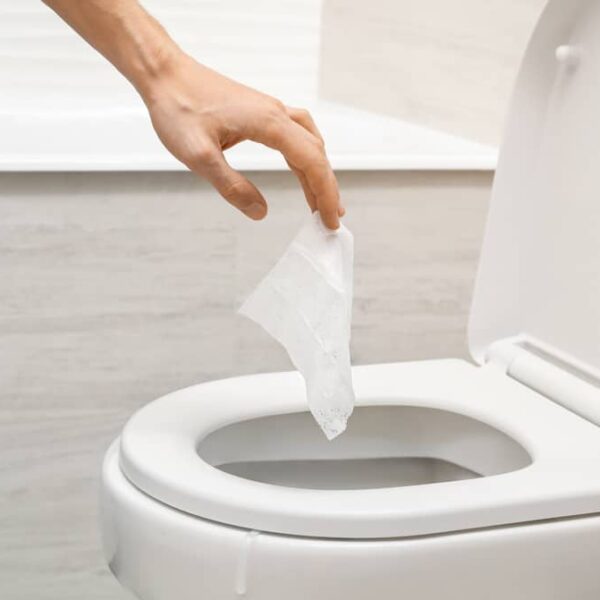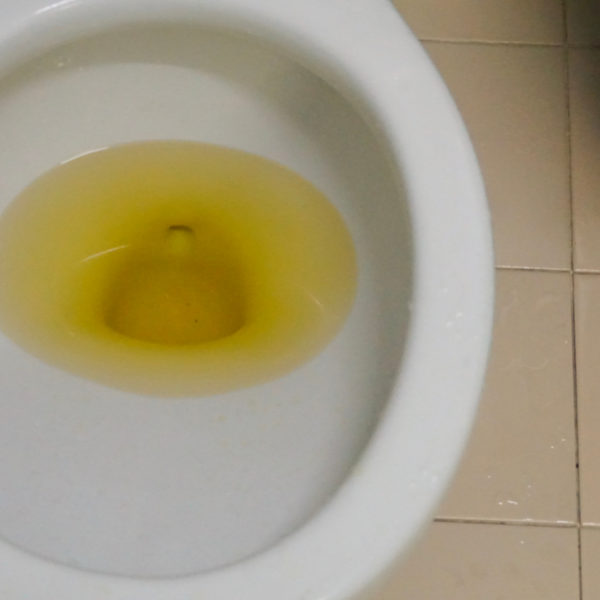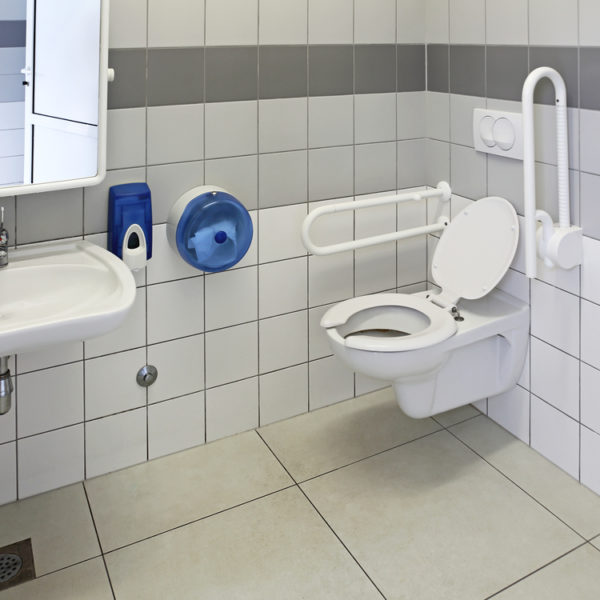You probably know how long it takes to refill your flushing toilet cistern. It’s a priority for many buyers and renters, so you always test it while you’re shopping for a home. You may think about the toilet seat design as well, especially it’s material and color.
And while you’ll ask about the size of your toilet, you’ll never think about the size of the toilet seat. You’ll be more concerned about keeping said seat up or down. As it turns out, toilet seats have different sizes too! So let’s walk through the process of measuring your seat size.
Step 1: Don’t fall for the gimmicks
There are four key measurements you need, no matter what kind of toilet you have. These are:
- Toilet seat length
- Toilet seat width
- Bolt spread
- Wall length
Hardware stores may try to convince you that you need a fancier seat. They’ll ask a lot of questions about toilet cushions, adjusted height for grandparents, or potty seats for kids and pets. But even if you have those add-ons at home, they won’t affect your seat size.
Step 2: Check whether your seat needs replacing
How often should you change your toilet seat? Well, the seat has several functions:
- It keeps smells inside the toilet bowl.
- It offers extra support while you squat.
- It adds to your bathroom aesthetics.
- It’s warmer than cold porcelain, so it makes you more comfortable.
So how do you know it’s time to change the seat on your toilet? There are four main indicators:
- The paint on the seat is thinning, peeling, or chipping.
- You’ve moved to a new house and you don’t want the previous owner’s seats.
- There are cracks in the seat that risk pinching the bottoms of bathroom users.
- Your bathroom starts to smell, even when the seat cover is down. Meaning your seat has gaps, so it’s probably porous, dented, or broken, even if you can’t see said blemishes.
If you notice any of these signs, it’s time to grab the tape measure and visit the hardware store.
Step 3: Check the type of toilet you have
While they all have the same function, toilets have lots of different styles and designs. These include:
- Specialty toilets for kids, elders, or the disabled
- Standard sized toilets that are round or oval
- Bidets that use a bidet toilet seat
- Square or rectangular-shaped toilets
- Wall-mounted tankless toilets
- Oval toilets that use ‘inverted’ u-shaped seats which are open at the front
When you’re buying the toilet itself, you need to measure the floor distance from the wall to the base of your toilet. You also need to check the height of the toilet. Standard sized toilets stand (or rather, they sit) 16 inches high, while toilets for the elderly can be 17 to 19 inches tall.
The height of your toilet doesn’t necessarily influence your toilet seat measurement. However, the shape and style make a difference. Round toilets and oval toilets (referred to as elongated toilets) have standard sizing. US-made toilets also have different sizing from European ones.
Step 4: Remove your old toilet seat
This may seem obvious because you’ve already decided to replace it. But whether it’s a corner toilet or a centrally-positioned toilet, removing the seat makes it easier to measure. Put on gloves and pull off the toilet seat lid. Don’t just lift the lid. Remove all its clips and bolts.
You need the surface of the toilet to be completely bare. This allows you full access. It can be helpful to measure the seat cover itself, so flip it over and measure its longest and widest points. Measure the space between its joints as well, especially the gap between bolts or clips.
Write down these measurements so you can compare them with the bare toilet seat. You can also take a photo of the seat from various angles. Photograph it with the seat up, the seat down, and the seat turned upside down. You want to note the shape, color, and any decorative trim.
Step 5: Clean the bare toilet
This area is usually covered, and it sometimes stays down when you flush, so it has a lot of germs and splash-back. Wipe the bare seat with disinfectant. You can wipe the sides of the toilet too, and the rims. Wipe any sections you’re likely to touch, including to removed seat cover.
Step 6: Measure the length of your toilet seat
With your old toilet seat removed and your measuring area clean, you can see the two holes where the seat screws in. Place your tape measure right in the middle of the two holes, then stretch it across the longest part of the toilet rim. Stretch to the edge of the toilet.
If your toilet is curvy, it will roughly be 16 inches or 18 inches. This is the regulated length of an American standard toilet. If your toilet is 16 to 17 inches long, buy a round toilet seat. If it’s 18 to 19 inches, you need an elongated elliptical toilet seat. Toilet height doesn’t change this.
Step 7: Measure the width of your toilet
For curvy toilets, width isn’t important, because their sizing is based on their length. But for toilets with unusual shapes like square, rectangle, or d-shape, the width matters. Find the widest point and measure the toilet from one side to the other.
Step 8: Measure the bolt spread
It’s important to verify the space between those two holes at the back of your toilet seat. These seats hold the screws, bolts, or mounting clips that fix your toilet seat and toilet lid in place. The spacing is called bolt spread, and it’s different for American and European toilet seats.
Place your tape measure in the middle of one hole and stretch it to the middle of the other. Bolt spreads of 5.5 inches need American toilet seats, while a bolt spread of 6.5 inches needs a toilet that was imported from Europe. You might also have a model with a less common design.
The shape makes a huge difference because some specialty models (like square toilets and d-shaped toilets) have bolt spreads of up to 10 inches. If you buy the toilet based on a visual assessment, you won’t lift the lid to check the bolts. And even if you do, you can’t always tell it’s wider.
Step 9: Measure the wall gap
This is helpful for D-shaped toilets, tankless toilets, and other specialty toilets. Put your tape measure right in the middle of your two bolt holes and stretch it up to the wall. If your toilet doesn’t touch the wall, measure up to the cistern or the back rim of the toilet.
This measurement matters because it affects how your toilet seat is mounted. You don’t want to have to cut down a toilet seat that won’t squeeze into place. It can be especially tricky if you’ve installed a compact toilet for small spaces. Try different measuring positions to get it right.
Step 10: Look for any extra details
Toilets for the elderly sometimes have support nubs under the seat for extra height. Kiddie toilets might have a toilet seat clamp to prevent them from opening it unsupervised. While these elements won’t affect your measurements, they’ll influence the type of seat you buy.
Since you can’t take the old seat with you, note these extra features so you can get the right style of toilet seat. You can also photograph your bathroom color scheme, just in case you want to switch things up and get a different color seat. It’s easier to make that call with pictures.
Otherwise, you’ll be at the hardware store staring at a mint seat cover for ages. You’ll mentally try to figure out whether it works with your walls, floors, and bathroom rugs. You don’t want to get home with the wrong shade of green and end up in trouble with your spouse.
It can also be helpful to check the model of your toilet. Look under the toilet seat to confirm its brand name and model number. You can also lift your cistern lid and check under it, or check the inner sides of the cistern. The brand and model is often in one of these three spots.
Step 11: Walk into the hardware store
Once you’re inside, you’ll probably be overwhelmed. Who knew there were so many types of toilet seats? Avoid the stress and drama by walking up to an attendant and showing them your measurements. When they offer you a toilet seat, check the information on the packaging.
It may indicate your seat is round (16 inches long), elongated (18 inches long), American (5.5 inch bolt spread), European (6.5 inch bolt spread), D-shaped, or rectangular. Ask the attendant to show you an open pack, just to be sure. Especially if the packaging isn’t see-through.
Get the right seat for your throne
You probably never thought you’d have to measure your toilet seat. It’s a crucial step in toilet seat replacement though, and it’s extremely easy to do.
- Remove the toilet seat to expose the mounting holes below.
- Measure from the middle of the two holes to the front rim (length).
- Measure from the center of these holes to the back wall or cistern.
- Measure the distance from one hole to the other (bolt spread).
- Measure the toilet width at its broadest part (width).
Have you considered a colored toilet seat? Show us pictures of your toilet choice in the comments!
